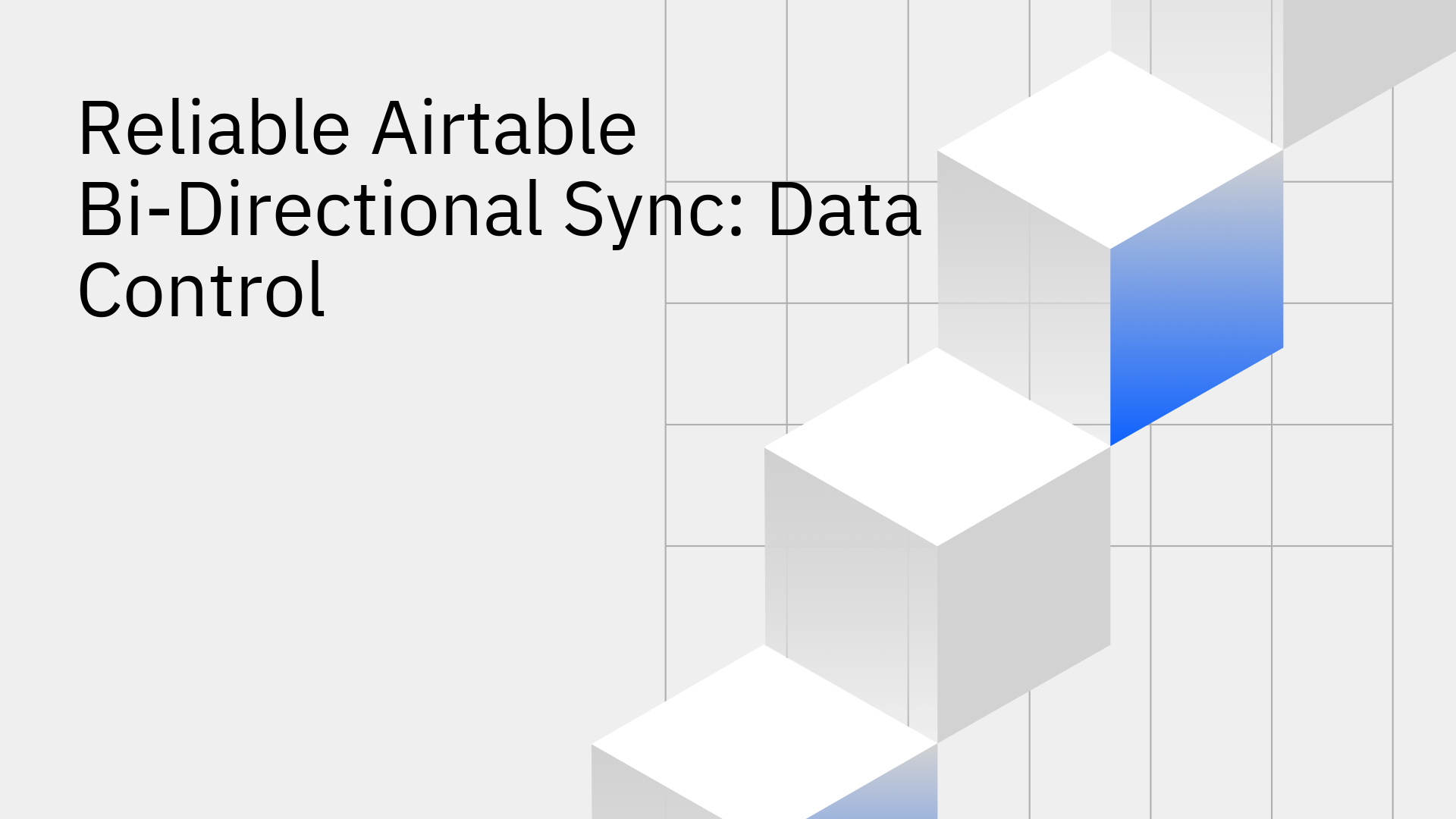
Airtable is a powerful tool that blends the functionality of a spreadsheet and a database, widely used for project management, CRM, and more. As businesses increasingly rely on it, a common challenge arises: keeping data consistent when it is used across multiple applications. This fragmentation leads to data silos, manual entry errors, and decisions based on outdated information.
The solution is bi-directional sync, a process that ensures data remains identical across two or more platforms, with updates in one system automatically reflecting in the other. This article will explore how to achieve a reliable Airtable bi-directional sync to gain full control over your data.
A bi-directional sync, or two-way sync, is a continuous process where data flows back and forth between two connected applications in real time. Unlike a one-way sync that only pushes data from a source to a destination, a two-way sync maintains perfect alignment between both systems.
Airtable offers a built-in sync feature that allows edits in a destination table to be synced back to the source. However, this native capability has notable limitations. According to Airtable's documentation, this feature is only available for customers on Business and Enterprise Scale plans and requires the user to have Creator permissions to configure it [1]. While functional for basic use cases, this approach may not be sufficient for complex, real-time, or high-volume scenarios that demand robust performance and reliability.
Users often encounter significant issues with native solutions or simpler integrations. Configuration problems, such as specific fields being unavailable or greyed out during setup, can completely halt the integration process. For example, users have reported struggles with a HubSpot-Airtable sync where such issues prevent a workable connection [2]. These limitations have fueled the rise of specialized third-party tools designed to achieve real-time data consistency with robust, reliable data synchronization.
Stacksync is an enterprise-grade platform built specifically for reliable, real-time, and scalable two-way data synchronization. It is engineered to overcome the limitations of native and basic integration tools by providing a purpose-built solution for operational data consistency. With the Stacksync Airtable connector, you can establish a single source of truth that empowers your teams to work with confidence.
Stacksync provides advanced features designed to ensure complete data integrity and control:
With Stacksync, establishing a robust, bi-directional sync is a straightforward process that doesn't require extensive engineering resources. You can make your real-time sync setup easy and have it running in minutes.
Connect Airtable and other apps—such as Salesforce, HubSpot, or PostgreSQL—in one click using secure methods like OAuth.
Select the specific Airtable bases and tables you want to sync. Stacksync supports all standard and custom objects and fields within your applications, giving you complete flexibility.
Stacksync automatically maps fields between your connected systems, even if they have different names or data types. It handles all data transformation seamlessly in the background.
Once your mapping is complete, activate the sync. You can then monitor all data flows in real-time directly from the Stacksync dashboard for full visibility and control.
(A simple diagram illustrating the three-step sync process: Connect -> Map -> Sync)
A reliable integration allows you to sync Airtable both directions, unlocking powerful workflows that drive efficiency and collaboration across your organization.
Keep your sales and project management teams perfectly aligned. When a sales representative closes a deal in a CRM like HubSpot or Salesforce, Stacksync can instantly create a new project in your Airtable project management base. As the project team updates tasks and milestones in Airtable, the status is reflected back in the CRM account record, eliminating manual updates and ensuring everyone has access to the latest information.
Empower non-technical teams to interact with production data safely. You can use Airtable as a user-friendly interface for a production database like PostgreSQL or Snowflake. Your operations or marketing teams can view and update records in Airtable, and Stacksync instantly syncs those changes back to the database without requiring direct access or complex queries. With a wide array of available connectors, you can integrate nearly any system in your stack.
For consulting firms and agencies, maintaining data consistency across client-facing projects is critical. Stacksync allows you to create a master client database that syncs with individual client Airtable bases. This lets you master your Airtable client sync setup, ensuring both your team and your clients always see the most up-to-date information. Updates from either end are propagated instantly, creating a single source of truth for every engagement [3].
While Airtable has native syncing, its limitations make a dedicated tool like Stacksync essential for businesses that need reliable, scalable, and real-time data consistency. Brittle integrations and manual processes create operational drag and risk data integrity. By implementing a true bi-directional sync, you can eliminate these issues and establish a single source of truth across your entire tech stack.
Stacksync provides complete control over your data with features like live issue management, smart rate limits, and enterprise-grade security. It empowers your teams to work with confidence, knowing the data they depend on is always accurate. By understanding the two proven ways to sync your Airtable data, you can choose the path that guarantees reliability and control.
Ready to take control of your data? Book a demo or sign up for a free trial to experience the power of Stacksync's bi-directional sync for Airtable.